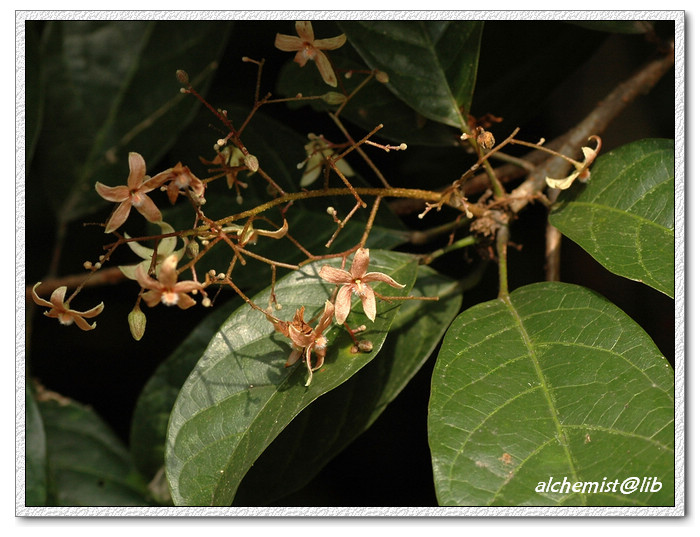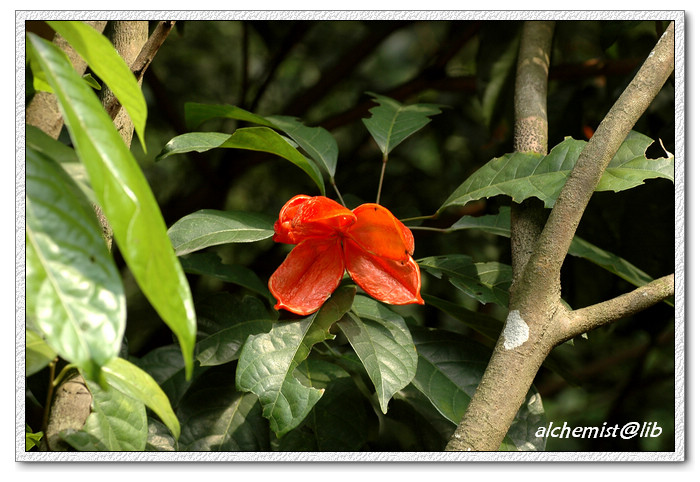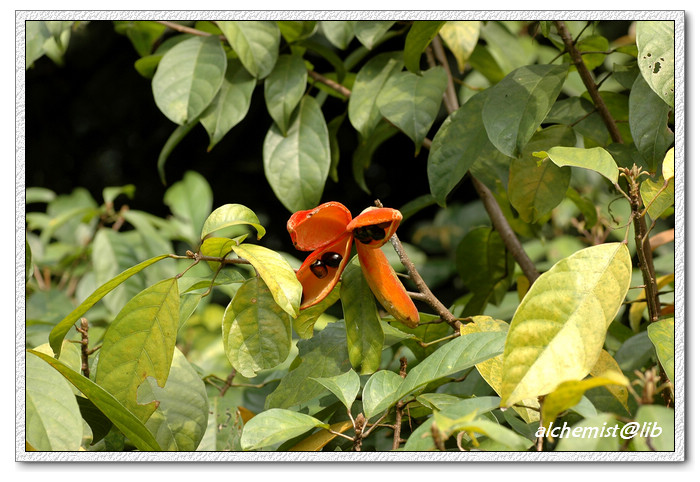假苹婆 Sterculia lanceolata
- Scientific Name: Sterculia lanceolata Cav.
- Ref: Diss. 5:287. 1788
- Synonyms: Camaion undulata (Lour.) Raf.; Helicteres undulata Lour.; Sterculia balansae Aug.DC.
- Chinese Common Name: 假苹婆 jiǎ∙píngpó, 鸡冠木 jīguàn∙mù, 七姐果 [粤]cat1 ze2 gwo2
- Japanese Common Name: セイランノキ [青嵐の木] seirannoki
- Family: Malvaceae
- Genus: Sterculia
- Distribution: Usually near streams. Guangdong, Guangxi, Guizhou, S Sichuan, Yunnan [Laos, Myanmar, Thailand, Vietnam].
- Photo: 06/21/2009, South China Botanical Garden, Guangdong
- Note: Chinese common name in Cantonese uses to refer to Sterculia nobilis
Trees. Branchlets at first pilose. Petiole 2.5-3.5 cm; leaf blade elliptic, lanceolate, or elliptic-lanceolate, 9-20 × 3.5-8 cm, abaxially nearly glabrous, adaxially glabrous, lateral veins 7-9 on each side of midrib, curved upward, connected near margin, base obtuse or nearly rounded, apex acute. Inflorescence paniculate, 4-10 cm, densely many-branched. Calyx reddish, divided almost to base, pubescent abaxially, lobes oblong-lanceolate or oblong-elliptic, 4-6 mm, stellately spreading, margins ciliate, apex obtuse or minutely mucronate. Male flowers: androgynophore 2-3 mm, curved. Anthers ca. 10. Female flowers: ovary globose, hairy. Style curved; stigma minutely 5-lobed. Follicle red when fresh, narrowly ovoid or ellipsoid, 5-7 × 2-2.5 cm, 2-4-seeded, densely puberulent, base attenuate, apex beaked. Seeds black-brown, ellipsoid-ovoid, ca. 1 cm. Fl. Apr-Jun. (Flora of China)

06/21/2009, South China Botanical Garden

06/21/2009, South China Botanical Garden
